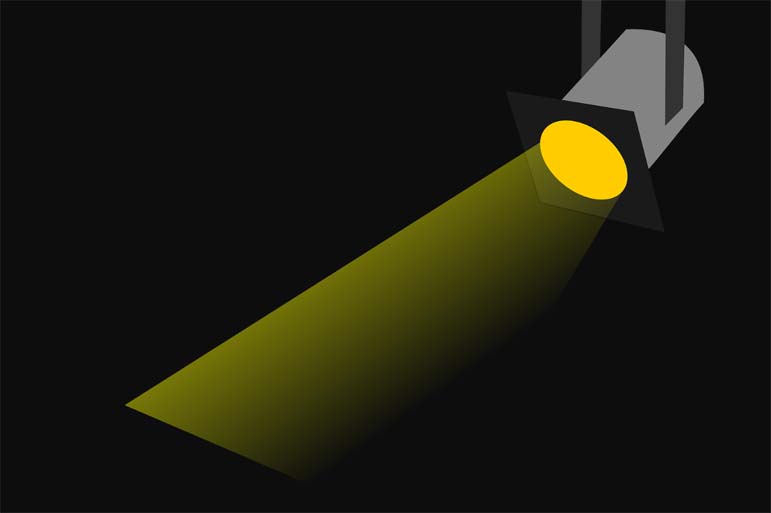
The mobile light towers weren't permanent. They were part of a six-month, $5 million experiment initiated by the office of Mayor Bill De Blasio in partnership with the housing authority, the police department and researchers at the Crime Lab at the University of Chicago.
Placed at about 40 randomly assigned public-housing developments across the city, the lights led to as much as a 59-percent nighttime decrease in serious crime, according to a working paper circulated this week by the National Bureau of Economic Research.
The drop is about what researchers would expect from a 10 percent increase in police staffing and suggests that spending on improved living conditions may be a more effective way to reduce crime than spending on increased police presence.
The researchers placed an average of seven mobile light towers in each development, affecting an estimated 40,000 residents total. Even when they considered a larger two-block radius around each development, in case criminals shifted their activity to avoid the lights, they found a reduction of at least 36 percent.
Almost three quarters of the crimes economists measured were felony assaults and robberies. They also counted murder, non-negligent manslaughter, motor vehicle theft, burglary and grand larceny.
Experiments of this scale are unusual in economics, where researchers typically rely on observational data and events that cause so-called natural experiments.
Aaron Chalfin, an economist at the University of Pennsylvania who co-led the study with Crime Lab New York, said he hoped to apply randomized experiments, the gold standard in medicine, to efforts to control crime.
"Researchers have been the studying the effects of street lighting on crime for decades, but this is the first time that there has been a randomized experiment that provides policymakers with the type of high-quality evidence that is required to make informed choices," Chalfin said.
Chalfin's collaborators on the study were University of Oregon economist Benjamin Hansen and University of Chicago Crime Lab's Lucie Parker and Jason Lerner.
Based on the results, the city has already installed new, permanent LED streetlights at public housing developments in East Harlem and Downtown Brooklyn, according to Renita Francois, executive director of Mayor's Action Plan for Neighborhood Safety. They plan to install 42 more, most at developments which were part of the experiment. The installation will cost about $54 million.
The economists write that street lighting outages were the third most common complaint fielded by the city's 311 operators between 2010 and 2016. Some saw that as an indication that residents, particularly those in public housing, knew they needed improved residential lighting long before the city's massive experiment.
It's typical of the city's heavy-handed approach that their response to lighting complaints from public housing residents was to install floodlights which many associate with the police department, said Katy Naples-Mitchell, a fellow at the Charles Hamilton Houston Institute for Race and Justice at Harvard Law School.
"I would imagine the people who are calling 311 asking for improved lighting may be frustrated with the remedy of floodlights operating from sundown to sunrise in their neighborhood," Naples-Mitchell said.
"If there was a dearth of street lighting on the Upper West Side, would the mayor's office have dreamed up a response in consult with the NYPD and invited outside researchers to do a randomized controlled trial?"
Francois said the city worked extensively with public housing residents to arrange the experiment. "We believe that people's perceptions and their lived experience are valuable data points," she said. "Residents met with us and recommended where to put the light towers, and then we adjusted accordingly throughout the process," she added later.
Francois said her organization met with neighborhood leaders and activists to inform the project. They also emailed a survey to a nonrandom sample of than 20,000 residents in late 2016 to get feedback on the lights and other public safety issues. About two in 25 responded.
Perhaps the best demonstration of light's effect on crime to date was a 2015 analysis in Review of Economics and Statistics by Texas A&M's Jennifer Doleac and Nicholas Sanders of Cornell University. The economists found when daylight saving time effectively shifted light from morning to evening, daily robberies fell by 7 percent. The effect was strongest (a 27 percent decrease) during the evening hours that were suddenly light when they had been dark just days earlier.
The effects of man-made lights are more difficult to measure than ambient sunlight, Doleac said. Unlike sunlight, streetlights are likely to vary based on neighborhood wealth, government activity and other confounding factors. As a result, it's surprisingly difficult to test whether streetlights reduce crime. "We really needed a randomized experiment with lighting to know what the impact is," Doleac said.
"Any change can change people's behavior - adding lights or removing them - and this could explain part of the effect," said Judith Green, a public health specialist at King's College, London.
The economists acknowledge this possibility, writing "the towers are prominent, may be associated with public safety in the minds of residents and are tended to regularly by personnel who refuel the lights during the daytime."
Phil Edwards, of the London School of Hygiene and Tropical Medicine, said the New York experiment adds to the considerable body of evidence that installing lights reduces crime, but noted important caveats.
In a 2015 study in the Journal of Epidemiology and Community Health, Edwards, Green and their collaborators found that when communities in England and Wales reduced street lighting, often for cost or environmental reasons, crime rates did not tend to change.
According to University of Connecticut's Richard Stevens, who has long studied how artificial light affects humans, lights this bright can suppress melatonin, disrupt circadian rhythms and increase the risk of breast cancer, diabetes and obesity.
"Constant light is a torture. People used to use that to torture people," Stevens said. "Why do they subject poor people to that?"


 Contact The Editor
Contact The Editor
 Articles By This Author
Articles By This Author